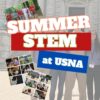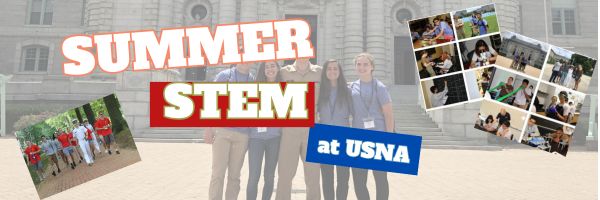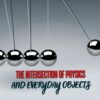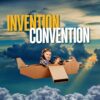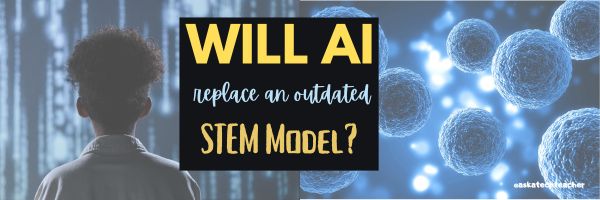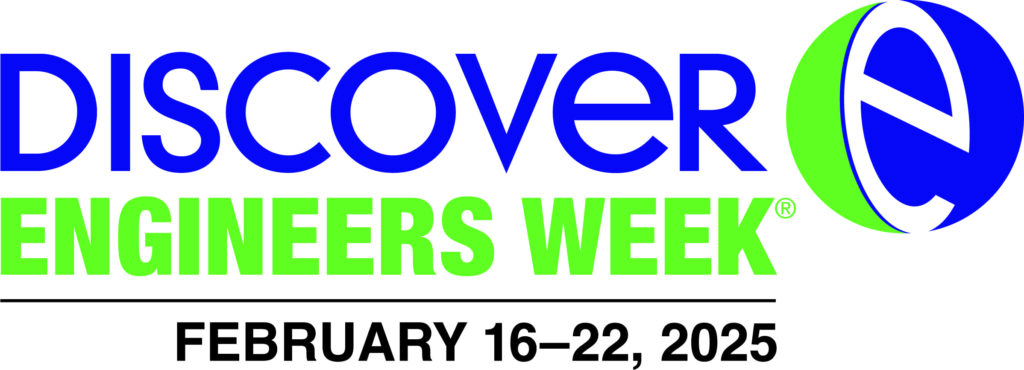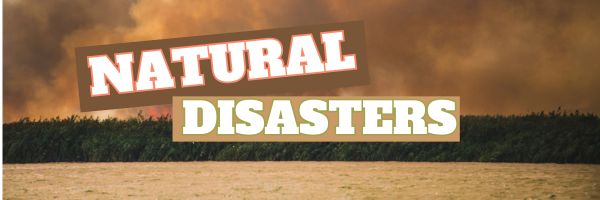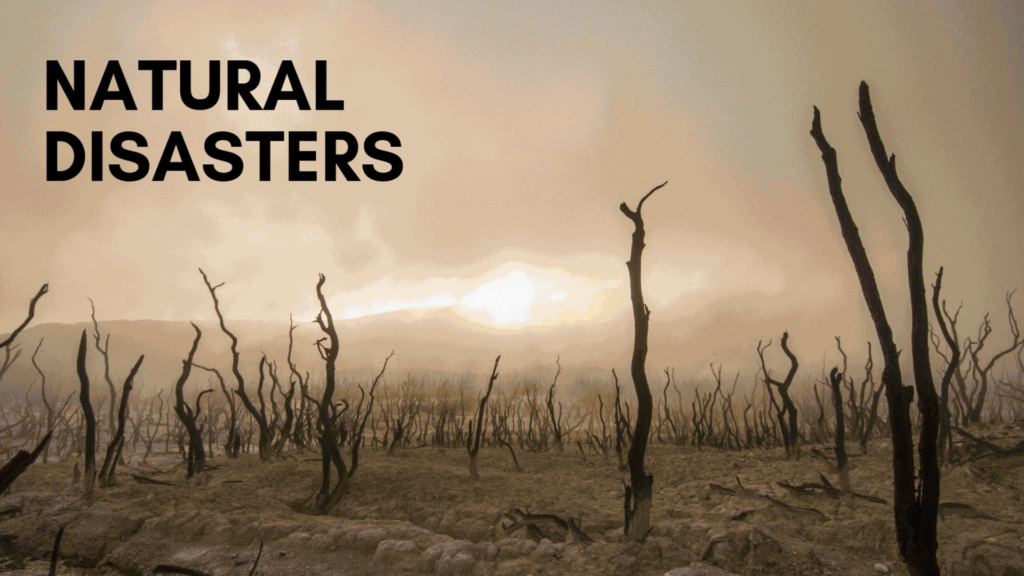Category: Science
Online Summer Educational Activities
What are parents and teachers most worried about over the summer? That kids will lose their sharp education edge, dulled by sun and sand and something else. Worry no more.
Your cure: learning disguised as play. Kids will think they’re playing games, but are actually participating in [mostly] free simulations available in the education field. A note: some must be downloaded and a few purchased, so the link might take you to a website that provides access rather than play. Choose what works for you:
- iCivics—experience what it means to be part of a democracy
- Second Life—simulates just about anything if you can find it
- Coffee Shop—run a coffee shop business
Share this:
- Click to share on Facebook (Opens in new window) Facebook
- Click to share on X (Opens in new window) X
- Click to share on LinkedIn (Opens in new window) LinkedIn
- Click to share on Pinterest (Opens in new window) Pinterest
- Click to share on Telegram (Opens in new window) Telegram
- Click to email a link to a friend (Opens in new window) Email
- More
World Environment Day: Living Responsibly with Nature
World Environment Day, celebrated annually on June 5th, is designed for encouraging awareness and action for the protection of our environment. Established in 1972 by the United Nations General Assembly and first held in 1974, it has grown with participation from over 143 countries.
Significance
World Environment Day serves as a reminder of our collective responsibility to protect and preserve the environment. It encourages individuals, communities, and governments to take concrete actions towards sustainable development and to address critical environmental challenges like climate change, biodiversity loss, and pollution.
Activities and Impact
Mark the day with various activities such as:
- Educational events: Workshops, seminars, and discussions on environmental issues
- Clean-up campaigns: Community efforts to clean up litter and pollution in local areas
- Tree planting: Reforestation and afforestation efforts to combat deforestation
- Art and cultural activities: Exhibitions, concerts, and performances that promote environmental awareness
Getting Involved
People can get involved in World Environment Day by:
- Participating in local events: Join clean-up drives, tree planting, or educational workshops.
- Spreading awareness: Use social media to share information about environmental issues and advocate for change.
- Making lifestyle changes: Adopt more sustainable practices such as reducing plastic use, conserving water, and minimizing carbon footprints.
World Environment Day continues to be a vital platform for fostering environmental stewardship and encouraging global cooperation in the fight for a healthier planet.
Share this:
- Click to share on Facebook (Opens in new window) Facebook
- Click to share on X (Opens in new window) X
- Click to share on LinkedIn (Opens in new window) LinkedIn
- Click to share on Pinterest (Opens in new window) Pinterest
- Click to share on Telegram (Opens in new window) Telegram
- Click to email a link to a friend (Opens in new window) Email
- More
Earth Day Class Activities
Every year, the United Nations recognizes April 22nd as International Mother Earth Day. It is a day we can all participate in making our air clean, water fresh and land unlittered rather than accepting the trash-filled oceans, the smoggy skies, and the debris-laden land that is becoming the norm.
Despite the questionable health of our world, we have made progress. Back in 1970, when Earth Day was first celebrated, trucks spewed black smoke as they drove down the highways, toxic waste was dumped into oceans with no repercussions, and the general opinion was that the Earth took care of itself. That changed when U.S. Senator Gaylord Nelson, Earth Day’s founder, witnessed the ravages of the 1969 massive oil spill in Santa Barbara California and decided it was time to do something. He started with a “national teach-in on the environment” with a simple goal: Encourage people to recognize the importance of protecting the Earth:
“It was on that day [Earth Day] that Americans made it clear they understood and were deeply concerned over the deterioration of our environment and the mindless dissipation of our resources.”
Before I go any further, listen to Earth’s song, recorded by NASA in space. It is stunning: (more…)
Share this:
- Click to share on Facebook (Opens in new window) Facebook
- Click to share on X (Opens in new window) X
- Click to share on LinkedIn (Opens in new window) LinkedIn
- Click to share on Pinterest (Opens in new window) Pinterest
- Click to share on Telegram (Opens in new window) Telegram
- Click to email a link to a friend (Opens in new window) Email
- More
Summer STEM at USNA
Summer STEM (Science, Technology, Engineering & Mathematics), is a week-long, overnight camp at USNA each year for students currently in the 7th-10th grades. Here’s information from the USNA website:
Engineering is all about creating, building, and making things better! So what does it take to be an engineer? If you like math and science, you are off to a great start. If you enjoy discovering new things, solving problems, and learning how things work – even better! Creativity, persistence, and the desire to make the world a better place are also important qualities. Becoming an engineer requires hard work and a good education. Our summer program will be a great start to your career in science and engineering.
The schedule:
Monday: Travel and Check-in
Tuesday: Air and Space Museum/DC Tour
Wednesday – Friday: Stem modules and presentations (Students will visit all science and technology majors at the US Naval Academy)
Saturday: Open House and Demonstrations—Share your new skills with your parents and friends. End the week by putting your projects on display.
Share this:
- Click to share on Facebook (Opens in new window) Facebook
- Click to share on X (Opens in new window) X
- Click to share on LinkedIn (Opens in new window) LinkedIn
- Click to share on Pinterest (Opens in new window) Pinterest
- Click to share on Telegram (Opens in new window) Telegram
- Click to email a link to a friend (Opens in new window) Email
- More
The Intersection of Physics and Everyday Objects
The Intersection of Physics and Everyday Objects
Physics might sound like something confined to textbooks and whiteboard scribbles, but it’s at play in our daily routines. It’s the force behind flying planes, the sparkle in our smartphone screens, and the whispers in our wireless headphones. Yet, most of us barely give it a second thought—a silent magician bringing everyday objects to life.
The Mysterious Maglev: Hovering Trains
Picture trains levitating on tracks without a single touch. Introducing magnetic levitation trains, or maglevs. With magnets defying gravity, these trains speed commuters from A to B in record time. They float, frictionless, offering a surreal ride atop a powerful physics trick. Maglevs also reflect the elegance with which physics turns weight into weightlessness, claiming new limits in transportation. By manipulating magnetic fields, maglev technology reduces almost all physical resistance, demonstrating the pure potential of movement unbound by conventional constraints.
Maglev technology isn’t just a scientific curiosity—it’s a path to environmental sustainability. With reduced friction losses and increased energy efficiency, maglev systems could significantly lower carbon emissions compared to traditional rail systems. As the demand for greener transportation solutions grows, innovations like maglev promise a future where fast, reliable transportation doesn’t have to come at an environmental cost. Moreover, with fewer moving parts, maglev trains face less wear and tear, potentially reducing maintenance costs and extending lifespans, further contributing to cost-effectiveness and sustainability.
Gyroscopes: Spinning Wonders of Balance
From the wheel in your bicycle to your smartphone’s compass, gyroscopes are hidden heroes. This rapid-spinning gizmo stabilizes and guides, keeping you oriented whether you’re navigating a trail or piloting an aircraft. The secret? Angular momentum holds its ground, a scientist’s magic trick ensuring balance. On a more grand scale, these devices play a vital role in stabilizing large marine vessels and space stations, proving that, no matter the size, balancing forces play an important part in maintaining harmony against the forces of motion.
Gyroscopes have permeated sports and gaming sectors, adding depth to user experiences. Controllers and smartphones equipped with this technology allow for intuitive controls, making virtual environments more immersive. Detecting subtle tilts and movements, gyroscopes bring tactile realism to digital adventures, bridging the gap between the physical and digital realms. As entertainment industries continue embracing these dynamics, users experience a newfound synergy between movement and on-screen action, illustrating the evolving capabilities of gyroscopic innovation.
In the vein of precision measurement, smartphone sensors also facilitate groundbreaking tools such as smartphone-based goniometers, allowing accurate angle measurements in an accessible form. Such innovations highlight how even the most intricate movements can be captured and analyzed with everyday tech, further illustrating the seamless union between physics and present-day conveniences.
Thermal Imaging: Seeing Warmth
Engineering a vision into the unseen, thermal imaging devices capture heat. At night or behind walls, they reveal the world in reds and blues, turning warm bodies, even cool machinery, into vivid portraits. Heat detection isn’t just for spies; it informs safety checks and saves lives. Beyond safety, thermal imaging has also found purpose in medicine, offering non-invasive diagnostics by revealing underlying inflammation or circulation issues, truly extending the line between vision and intuition.
Thermal imaging has ventured into new territories, discovering uses in agriculture and environmental monitoring. In farming, thermal cameras help assess plant and soil health by spotting areas of water stress. Environmentalists use these devices to monitor wildlife habitats and detect abnormalities, contributing to conservation efforts. Such applications showcase how thermal imaging can penetrate fields far removed from its origins, yielding insights with far-reaching implications both on micro and macro levels.
Smart Lightbulbs: Playing with Light
Flipping a switch to light up a room feels mundane. Yet, beneath the glow, physics dances! Smart lightbulbs manipulate photons to brighten or dim your space. Through concepts like lumens and wavelengths, light transforms into an orchestrated show at your fingertips. Interestingly, smart bulbs can also adjust to your mood or time of day, elevating your home’s ambiance effortlessly. This simple act channels complex concepts of color temperatures and energy efficiency, enhancing our lives in subtle yet remarkable ways.
Beyond aesthetics, smart lightbulbs offer a gateway to energy conservation. By allowing users to customize brightness and color temperature, they can optimize lighting to suit different activities and moods while significantly reducing energy consumption. Integrating these bulbs with home automation systems also means they can respond automatically to natural daylight, further reducing unnecessary power usage and lowering electricity bills.
Wireless Waves: Invisible Highways
Every time you stream a song or text a friend, electromagnetic waves are hard at work. Wireless communication can’t exist without them. These waves traverse invisible highways, bringing data to your device in a blink. It’s the very foundation of our connected reality. At its core, wireless technology enables seamless interaction by allowing waves to jump between frequencies. These waves skip effortlessly through urban landscapes, ensuring reliable communication even in the most unexpected corners of our bustling environments.
Quantum Tunneling: Microscopic Magic
In the microscopic realm, quantum tunneling champions the bizarre. Electrons defy boundaries, traversing barriers with inexplicable ease. Essential for devices in medicine and computers, this mind-bending phenomenon rewrites the rules we take for granted in the macroscopic world. Such behavior allows for innovations in semiconductors that power our everyday devices and fuels breakthroughs in computing power, highlighting how minute dynamics hold colossal potential for technological progress.
Conclusion
Physics isn’t confined to labs or lectures—it’s intertwined with everything around us. With every step forward, every gadget grasped, we engage in a dance with forces those familiar formulas attempt to explain. The intersection of physics and everyday objects is where the ordinary transforms into the extraordinary.
–image credit: https://www.pexels.com/photo/gray-newton-s-cradle-in-close-up-photogaphy-60582/
Here’s the sign-up link if the image above doesn’t work:
https://forms.aweber.com/form/07/1910174607.htm
“The content presented in this blog are the result of creative imagination and not intended for use, reproduction, or incorporation into any artificial intelligence training or machine learning systems without prior written consent from the author.”
Jacqui Murray has been teaching K-18 technology for 30 years. She is the editor/author of over a hundred tech ed resources including a K-12 technology curriculum, K-8 keyboard curriculum, K-8 Digital Citizenship curriculum. She is an adjunct professor in tech ed, Master Teacher, freelance journalist on tech ed topics, and author of the tech thrillers, To Hunt a Sub and Twenty-four Days. You can find her resources at Structured Learning.
Share this:
- Click to share on Facebook (Opens in new window) Facebook
- Click to share on X (Opens in new window) X
- Click to share on LinkedIn (Opens in new window) LinkedIn
- Click to share on Pinterest (Opens in new window) Pinterest
- Click to share on Telegram (Opens in new window) Telegram
- Click to email a link to a friend (Opens in new window) Email
- More
Invention Convention 2025 is coming
Invention Convention Worldwide is a global K-12 curricular program mapped to national and state educational standards that teaches students problem identification, problem solving, entrepreneurship, creativity skills, and confidence. RTX Invention Convention U.S. Nationals 2025 runs June 4-6, 2025 at The Henry Ford in Dearborn, MI. (more…)
Share this:
- Click to share on Facebook (Opens in new window) Facebook
- Click to share on X (Opens in new window) X
- Click to share on LinkedIn (Opens in new window) LinkedIn
- Click to share on Pinterest (Opens in new window) Pinterest
- Click to share on Telegram (Opens in new window) Telegram
- Click to email a link to a friend (Opens in new window) Email
- More
Will AI-driven Education Replace STEM? Experts think so
When I saw this ESchoolMedia article, my first response was, He** no! but I paused to ask why a reputable magazine would even ask this question. Before reading the article, I asked Grok the same question. Here’s what a generative AI has to say about that issue:
The end of STEM: Why AI-driven education must replace an outdated model
Share this:
- Click to share on Facebook (Opens in new window) Facebook
- Click to share on X (Opens in new window) X
- Click to share on LinkedIn (Opens in new window) LinkedIn
- Click to share on Pinterest (Opens in new window) Pinterest
- Click to share on Telegram (Opens in new window) Telegram
- Click to email a link to a friend (Opens in new window) Email
- More
Engineers Week Feb. 16-22 2025
This week, February 16-22, 2025 is DiscoverE’s Engineers Week. Their tagline:
“A week-long event, a year-long commitment”
Do you wonder why anyone would be passionate about engineering? Overall, engineering offers a combination of intellectual challenge, real-world impact, and opportunities for personal and professional growth. By pursuing a career in engineering, students can contribute to meaningful projects, solve complex problems, and make a positive difference in the world.
What is Engineers Week?
Engineers Week, also known as EWeek, is an annual event celebrated in the United States typically during the third or fourth week of February, this week: February 18-24, 2024 dedicated to promoting awareness and appreciation of engineering.
During Engineers Week, engineering societies, universities, companies, and other organizations organize workshops, competitions, seminars, outreach programs to schools, career fairs, and networking events. The goal is to inspire the next generation of engineers, showcase the importance of engineering in solving global challenges, and recognize the achievements of engineers and encourage young people to pursue careers in STEM (science, technology, engineering, and mathematics).
Share this:
- Click to share on Facebook (Opens in new window) Facebook
- Click to share on X (Opens in new window) X
- Click to share on LinkedIn (Opens in new window) LinkedIn
- Click to share on Pinterest (Opens in new window) Pinterest
- Click to share on Telegram (Opens in new window) Telegram
- Click to email a link to a friend (Opens in new window) Email
- More
17 Websites and Videos on Natural Disasters
Natural disasters is a related discussion to any number of topics–geography, ecology, Earth Day, even problem solving. Here are 17 websites that bring the power of these natural forces to students (click here for updates to the list):
- Avalanches
- Earthquakes
- Earthquakes–an animation
- Earthquakes for Kids
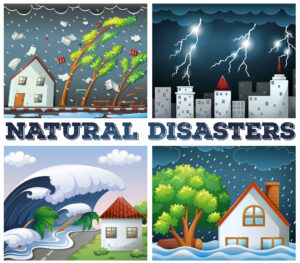 Four scenes of natural disasters[/caption]
Four scenes of natural disasters[/caption]
- Hurricanes
- Natural Disasters–for kids–video
- Natural disaster videos
Click image below for slideshow of many natural disasters
Share this:
- Click to share on Facebook (Opens in new window) Facebook
- Click to share on X (Opens in new window) X
- Click to share on LinkedIn (Opens in new window) LinkedIn
- Click to share on Pinterest (Opens in new window) Pinterest
- Click to share on Telegram (Opens in new window) Telegram
- Click to email a link to a friend (Opens in new window) Email
- More
7 Online Resources About Creating a #MakerSpace
A school-based makerspace is a hands-on, creative environment where students can explore STEM (Science, Technology, Engineering, and Math) and other interdisciplinary subjects. These spaces empower students to develop critical thinking, problem-solving, and collaborative skills while working on real-world projects. Key features are:
- Tools and Equipment:
- Basic Tools: Screwdrivers, hammers, pliers, and measuring devices.
- Technology: 3D printers, laser cutters, CNC machines, and vinyl cutters.
- Electronics: Arduino kits, Raspberry Pi boards, soldering stations, and basic circuitry tools.
- Crafting Tools: Sewing machines, paper cutters, and hot glue guns.
- Workstations:
- Dedicated areas for specific tasks like soldering, 3D printing, coding, or woodworking.
- Materials:
- Cardboard, wood, fabric, plastics, LEDs, wires, and recyclables for prototyping and building.
- Software:
- Tools for design, coding, and 3D modeling (e.g., Tinkercad, Fusion 360, Scratch, or Python IDEs).
- Learning Opportunities:
- Workshops or guided projects on topics like robotics, coding, 3D modeling, and engineering principles.
- Integration with the school’s curriculum to reinforce learning in subjects like physics, math,
Here are 7 online resources to help you create a school-based MakerSpace (click here for updates on this list):
Share this:
- Click to share on Facebook (Opens in new window) Facebook
- Click to share on X (Opens in new window) X
- Click to share on LinkedIn (Opens in new window) LinkedIn
- Click to share on Pinterest (Opens in new window) Pinterest
- Click to share on Telegram (Opens in new window) Telegram
- Click to email a link to a friend (Opens in new window) Email
- More







